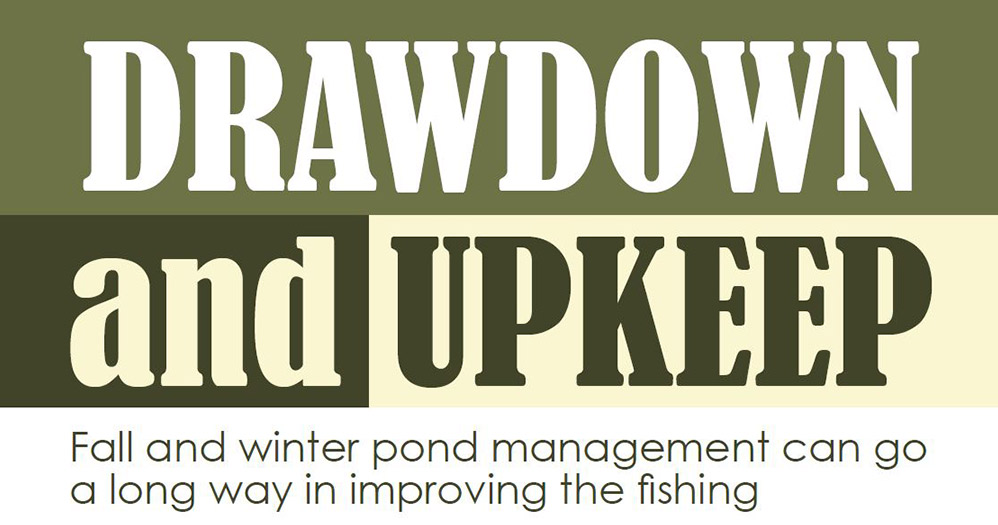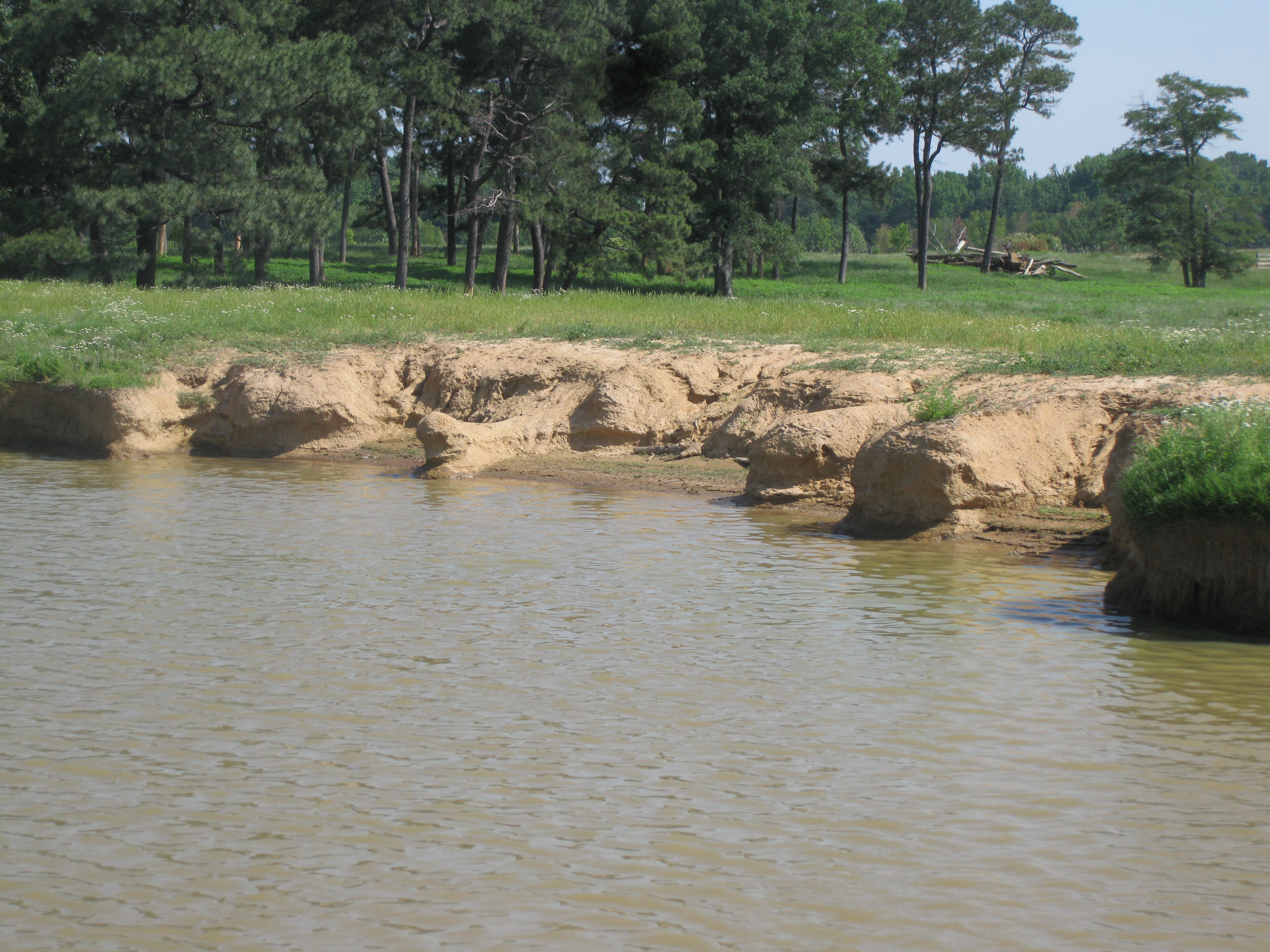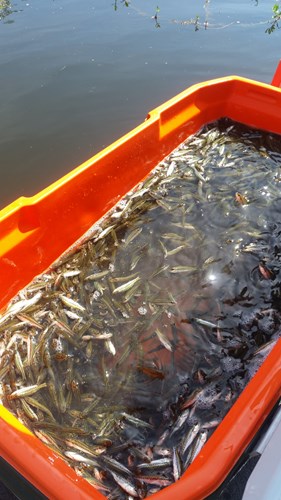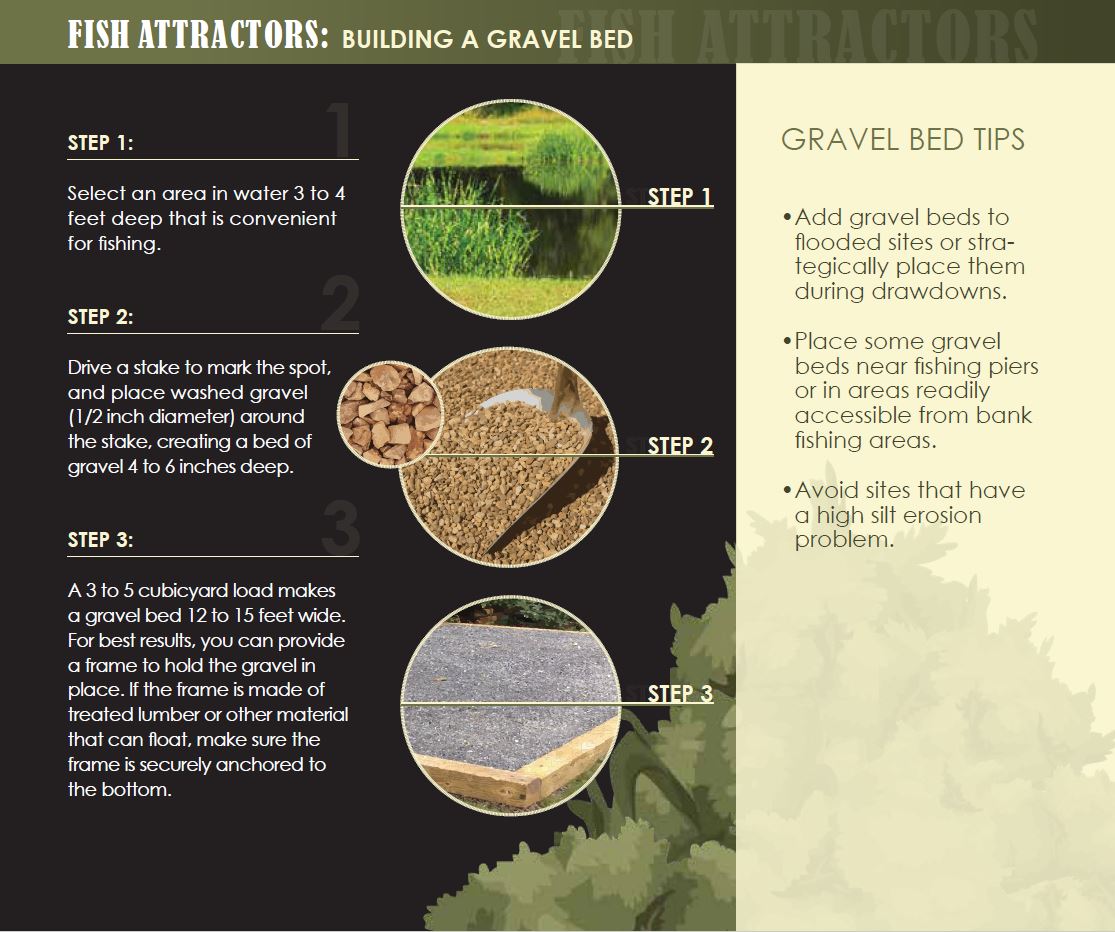Drawdown and Upkeep
10/3/2018 9:23:55 AM
By Ryan Jones and Keith Meals

By the time the winds of fall have blown away all the leaves, many anglers have replaced their fishing rods with archery equipment or a deer rifle. However, these anglers should keep this fact in mind: not only are fall and winter good times to fish, but next spring’s fishing trips can be improved with a few important, late-season pond management practices.
Perhaps the most inexpensive-yet-effective pond management technique is the winter drawdown, which allows for other practices like fish stocking, habitat manipulation, liming, pond deepening, and maintenance of piers, ramps, and levees. All of the standard fall and winter management activities here will enhance your pond’s productivity, value, and enjoyment.
WINTER DRAWDOWNS
Winter drawdowns can be used to manage nuisance aquatic vegetation or manipulate fish populations. Ponds should be drawn down in November to expose 25-50 percent of the pond bottom (depending on specific pond topography) and then allowed to refill in February. A drainpipe is needed to maintain a consistent water level over winter.

Unfortunately, many pond owners in Mississippi have to deal with problem vegetation, but aquatic herbicides are sometimes expensive and require specialized treatment methods. Winter drawdown is another alternative because it exposes vegetation to drying and freezing conditions that can reduce plant abundance the following year. Additionally, shallow areas often have the most aquatic weed problems. While the water levels are down, use a bulldozer to excavate the shoreline to a minimum of three feet deep. To prevent weeds from becoming reestablished, make sure there is at least a three-to-one slope at the edges. Excess dirt can then be used to build earthen fishing piers, islands, or submerged humps, which will serve as great fish attractors. Plant some vegetation (such as winter wheat) on these structures as soon as possible to keep winter rains from washing soil back into the pond. Monitor weed encroachment and follow up with herbicide treatments in the spring if necessary.
Other habitat enhancements are often easier in colder weather, too. Brush tops and felled trees should be added and replenished over time to maintain the quality woody cover in shallow, medium, and deep water. Most live trees will sink, but dead trees must be anchored to the bottom. Pea gravel beds should be constructed in 2-4 feet of water to promote bream reproduction and provide fish attractors in areas where bank fishing occurs often. Gravel bed frames can be built using PVC pipe or treated lumber and laid-over filter cloth to prevent scattering and sinking in the mud. Pea gravel should be spread to a depth of at least 4 inches throughout the frame to allow fanning and bed formation.
Ponds with “bream-crowded” fish populations can sometimes be returned to “balance” with a winter drawdown. “Bream-crowded” refers to a fish population characterized by numerous small, stunted bluegill and a few larger bass, whereas a “balanced” population features multiple sizes of healthy bass and bluegill. A drawdown will force these smaller fish out of the shallow cover and help increase bass predation. Some ponds can require supplemental stocking of advanced size (12-14 inches) bass if adequate numbers are not present to effectively reduce the number of bream. A productive bass spawn should be expected next spring because the bass will be healthier from feasting on bream all winter. It may take two consecutive winter drawdowns to effect change on the bream population and bring the pond back to balance.
(click to enlarge)
Low water levels also provide the best opportunity to make improvements or repairs to existing structures like piers, ramps, and other projects. Enlist the help of those friends and family who enjoy fishing to help you build a pier. Use treated lumber sturdy enough to carry the expected load, which is usually 2x6 planks for decking and 4x4 posts. If you already have a dock, check for and replace boards that appear cracked, warped, or rotten. If shoreline areas are eroding, install some riprap (rock, broken concrete, old bricks, etc.) to reduce damage from wave action. While you are at it, make sure to check the dam and emergency spillway for erosion.
A boat ramp is one of life’s small luxuries, even if you slide in a johnboat. It also makes it more convenient when Mississippi Department of Wildlife, Fisheries, and Parks (MDWFP) fisheries biologists use one of their boats to check your pond. If you have a larger boat, a concrete ramp is preferred. As with the pier, consult a professional to prevent the concrete from breaking later. A gravel ramp will do for a smaller boat. Make sure the ramp goes deep enough into the water so that your trailer does not drop off the end. Avoid “power loading” with an outboard motor to prevent a washed-out hole at the end of the ramp. Fall and winter is also a good time to make other necessary ramp repairs or improvements, such as adding gravel or re-grading it, repairing or replacing cracked concrete, or adding to the ramp or parking area. A pier by the ramp is ideal for loading or unloading gear and passengers. Cleats on the pier will make tying the boat off easier and prevent an unplanned swim.
If you fertilize your pond regularly, or if you plan to do so, liming your pond will make the fertilizer more effective. Most regions in Mississippi require one to two tons of agricultural limestone per acre. Contact your county extension agent (extension. msstate.edu/about-extension/county-ex-tension-offices) for information about a soil test to determine lime requirements—and be sure to tell the agent it is for a pond. Spread the lime over most of the pond bottom. Putting lime around the pond edges or in an inflow creek or ditch is not effective.
FALL AND WINTER FISH STOCKINGS
 Along with being a good time to improve fish habitat, fall and winter is also a great time to improve your fish population through stocking. The initial stocking of any newly renovated or constructed ponds should occur during the fall. Fish species such as bluegill, redear sunfish, channel catfish, triploid grass carp, and
Along with being a good time to improve fish habitat, fall and winter is also a great time to improve your fish population through stocking. The initial stocking of any newly renovated or constructed ponds should occur during the fall. Fish species such as bluegill, redear sunfish, channel catfish, triploid grass carp, and
fathead minnows can be stocked once a pond has filled about halfway. Cool fall temperatures also improve stocking success by reducing the stress of transport and acclimation periods to small fish. Contact your regional MDWFP fisheries biologist for help with fish species selection and stocking rates.
OTHER THINGS TO DO
If you put it off earlier, another item on the fall and winter to-do list is to mow both sides of the dam. If you have a fish feeder and stop feeding during winter, bring your feeder inside (if possible) to clean it and see if it needs repairs, cleaning, or new batteries. Constructing and erecting wood duck nesting boxes (do not forget a predator guard) is another great winter project since ducks pair in winter and then begin nesting in early spring.
Do not focus on all the work you have to put in; enjoy yourself. This is also a great time of year to fish. Leaves are changing color, the weather is comfortable, and fish are fattening up for winter. If your pond is overcrowded with small bass, harvest some by throwing some small spinnerbaits or curly-tailed grubs in bream-imitating colors to produce bigger bass in the future. Be sure to record any catches so you know if you are achieving harvest goals or, if you are managing for catfish, when it is time to restock.
More information on seasonal activities, stocking rates, and pond management can be found at mdwfp.com or extension. msstate.edu/natural-resources/fisheries.
Ryan Jones (Central Region) and Keith Meals (North Region) are MDWFP Fisheries Biologists.










